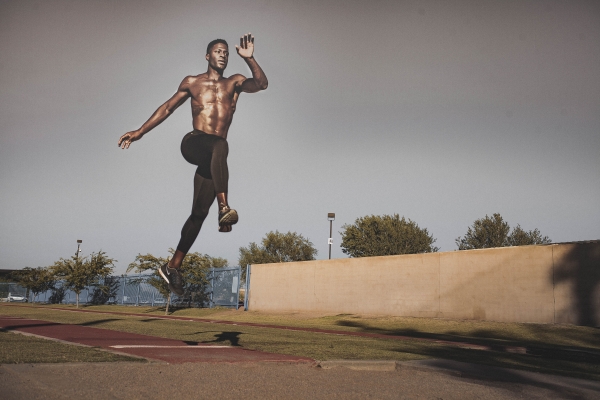Strength is a function of the nervous system. The better your nervous system is firing, the better you’ll perform in big lifts. In between my warm-ups and main lifts I enjoy doing plyometrics to get my nervous system firing. I have various plyometric moves depending on which lift I do.
Sometimes you’re feeling sluggish and unmotivated before heading into a workout. Performing some plyometric movements will quickly ignite the inner fire necessary to dominate those weights and feel like an animal.
In case you don’t know what they are, plyometrics are exercises in which your body exerts force with the goal of increasing power. Another reason I like plyometrics before doing my big lifts is due to the muscular power activation. The faster you can move the weight in safe manner, the less likely you’ll get stuck mid lift. Power is a combination of strength and speed. Plyometrics are often associated with jump training but they can be used various ways. Sprints are an example of plyometric exercises. Most commercial gyms don’t have enough space for you to perform sprints, especially during the busy hours. I’m not a big fan of treadmill sprints but I do have selective movements for various compound lifts.
Deadlifts and Bounding: Bounding is my favorite way to prime myself for deadlifts. As a plyometric movement bounding awakens your nervous system to prepare for big lifts. Bounding and deadlifts complement each other since they both involve horizontal movement of your hips. When bounding, begin in an athletic stance. Then jump forward as far you can. Once you get good at this movement, you can increase the plyometric element of the bounds by immediately jumping forward after landing from a bound. I typically do two sets of bounds for 30 yards per set.
Squats and Squat Jumps: The squat jump is as simple as it sounds. Begin at the bottom position of a squat and jump as high as you can. Once you land, jump immediately. This teaches your body to exert vertical force with your legs like you would do when squatting. I do three sets of five jumps.
Bench press and Plyo Push-ups: Plyo push-ups help with your pushing power. I like to place my hands on a gym mat and begin in push-up position. As you lower your body like you’d do with doing push-ups, push your body up forcefully and get your hands off the ground. This is like a clap push-up without the clapping. I usually do this on a gym mat to reduce the force on my wrists.
Bonus for Squats and Deadlifts: The ultimate nervous system primer is the depth jump. Depth jumps are perfect for squats and deadlifts because they utilize all your lower body muscles. They also awaken your nervous system like nothing else. First stand on a box or a bench. Step off the bench and the moment you land, jump as high as you can. As you become more proficient with the movement, you can increase The move looks simple but it’s very strenuous on your body. To prevent injury, make sure you’re able to squat at least 1.5 times your body weight. Also, practice proper landing by doing depth drops. Depth drops are when you step off a box and just land. You should also do them on soft floors like those of a studio room.Like all plyometric movements, keep volume low. I usually do three sets of three or four. Before doing depth jumps, I usually do one set of squat jumps or broad jumps, depending if I’m doing squats or deadlifts that day.
Bonus: Adding Plyometrics to your workout routine will make you a better athlete.
Photo via VisualHunt.com
